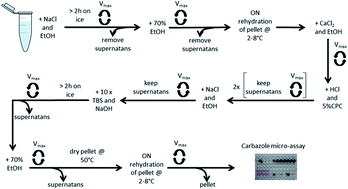Characterization of suspected dermal fillers containing hyaluronic acid
Abstract
Hyaluronic acid (HA) has important applications in the field of orthopedics, ophthalmology and cosmetics. This polymer can be present in cosmetic products or can be used as a dermal filler. The latter frequently contains cross-linked HA. Today's methods to quantify the amount of cross-linked HA are not very specific. In this paper the development and validation of a specific identification and quantification method is described. The proposed method utilizes an essential pre-extraction step prior to identification by infra-red spectroscopy followed by an identity confirmation and quantification with the carbazole micro-assay. The method was successfully validated using the “total error” approach in accordance with the validation requirements of ISO-17025. During the validation a variety of formulations including those present in legal HA containing dermal fillers were taken into consideration. As a proof of principle, legal and suspected illegal dermal fillers intercepted in 2016 were assessed. All legal samples and 2 out of 14 suspected illegal samples were conform for the amount of HA claimed and present in the sample. Most of the suspected illegal samples contained much less than what was claimed on the package. Taken together, the newly developed and validated method can be used for the identification and quantification of HA in legal and suspicious HA-containing dermal fillers. Furthermore, this method doesn't require the use of expensive instrumentation or reagents and can therefore be executed in any laboratory equipped with a centrifuge, micro-plate reader and heating block.



 Please wait while we load your content...
Please wait while we load your content...